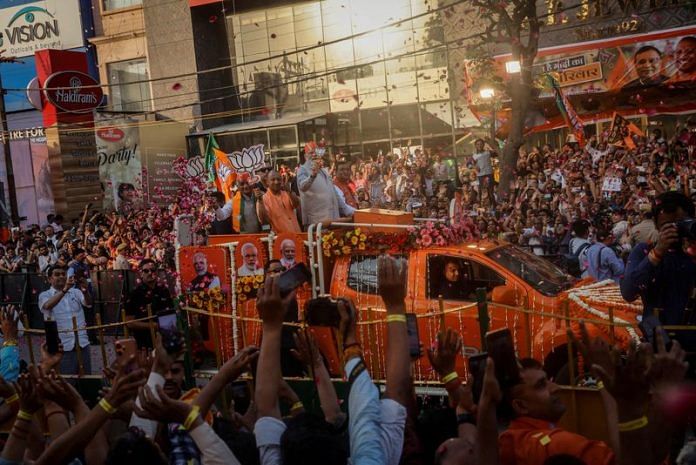By YP Rajesh and Tanvi Mehta
NEW DELHI (Reuters) – India’s Prime Minister Narendra Modi is expected to win a record-equalling third consecutive term in office as the counting of 642 million votes in the world’s largest election began on Tuesday.
TV exit polls broadcast after voting ended on June 1 projected a big win for Modi, but exit polls have often got election outcomes wrong in India.
However, if Modi’s victory is confirmed, his Hindu nationalists will have triumphed in a vitriolic campaign in which parties accused each other of religious bias and of posing a threat to sections of the population.
Investors have already cheered the prospects of another Modi term, expecting it to deliver further years of strong economic growth and pro-business reforms, while a possible two-thirds majority in parliament could allow major changes to the constitution, rivals and critics fear.
“The next government’s main task will be to set India on the path of getting rich before it ages,” the Times of India newspaper said in an editorial on Tuesday, referring to the young, working age population in the world’s most populous nation. “The clock’s ticking.”
India stock futures edged higher and the rupee was steady before the count began at 8:00 a.m. (0230 GMT) on Tuesday. The NIFTY 50 index futures rose 0.21% in early trade, according to NSE International Exchange data, and was looking at another record high open.
TV exit polls released on Saturday after voting ended projected the BJP-led National Democratic Alliance could win a two-thirds majority in the 543-member lower house of parliament.
Several major polls projected the BJP alone could win more than the 303 it won in 2019.
The projections pushed Indian shares to lifetime highs on Monday while the rupee gained and bond yields dropped.
Nearly one billion people were eligible to vote in the seven-phase, seven-week poll which began on April 19 and held in searing summer heat with temperatures touching nearly 50° Celsius (122° Fahrenheit) in some parts.
More than 66% of registered voters turned out, just one percentage point lower than the previous election in 2019, squashing pre-poll concerns that voters might shun a contest thought to be a foregone conclusion in Modi’s favour.
Modi, 73, who first swept to power in 2014 by promising growth and change, is seeking to be only the second prime minister after India’s independence leader Jawaharlal Nehru to win three straight terms.
He began his campaign by showcasing his record in office including economic growth, welfare policies, national pride, Hindu nationalism and his own personal commitment to fulfilling promises which he called “Modi’s Guarantee”.
However, he changed tack after low voter turnout in the first phase and accused the opposition, especially the Congress party which leads an alliance of two dozen groups, of favouring India’s 200 million Muslims – a shift analysts said made the campaign coarse and divisive.
They said the pivot may have been aimed at firing up the Hindu nationalist base of Modi’s Bharatiya Janata Party (BJP) to draw them to vote. Modi defended himself against criticism that he was stoking divisions between Hindus and Muslims to win votes and said that he was only faulting the opposition campaign.
The opposition INDIA alliance, led by Rahul Gandhi’s Congress party, denied it favoured Muslims in the Hindu-majority country and said Modi would destroy the constitution if he returned to power and end affirmative action enjoyed by the so-called backward castes. The BJP rejects this.
The opposition alliance also promised more welfare measures and handouts, with surveys saying unemployment, inflation and rural distress were the main concerns of voters.
(Reporting by YP Rajesh and Tanvi Mehta; Editing by Toby Chopra and Michael Perry)
Disclaimer: This report is auto generated from the Reuters news service. ThePrint holds no responsibilty for its content.



